Boat Oil Painting Wall Art & Canvas Prints
Boat Oil Painting Wall Art & Canvas Prints
Couldn't load pickup availability
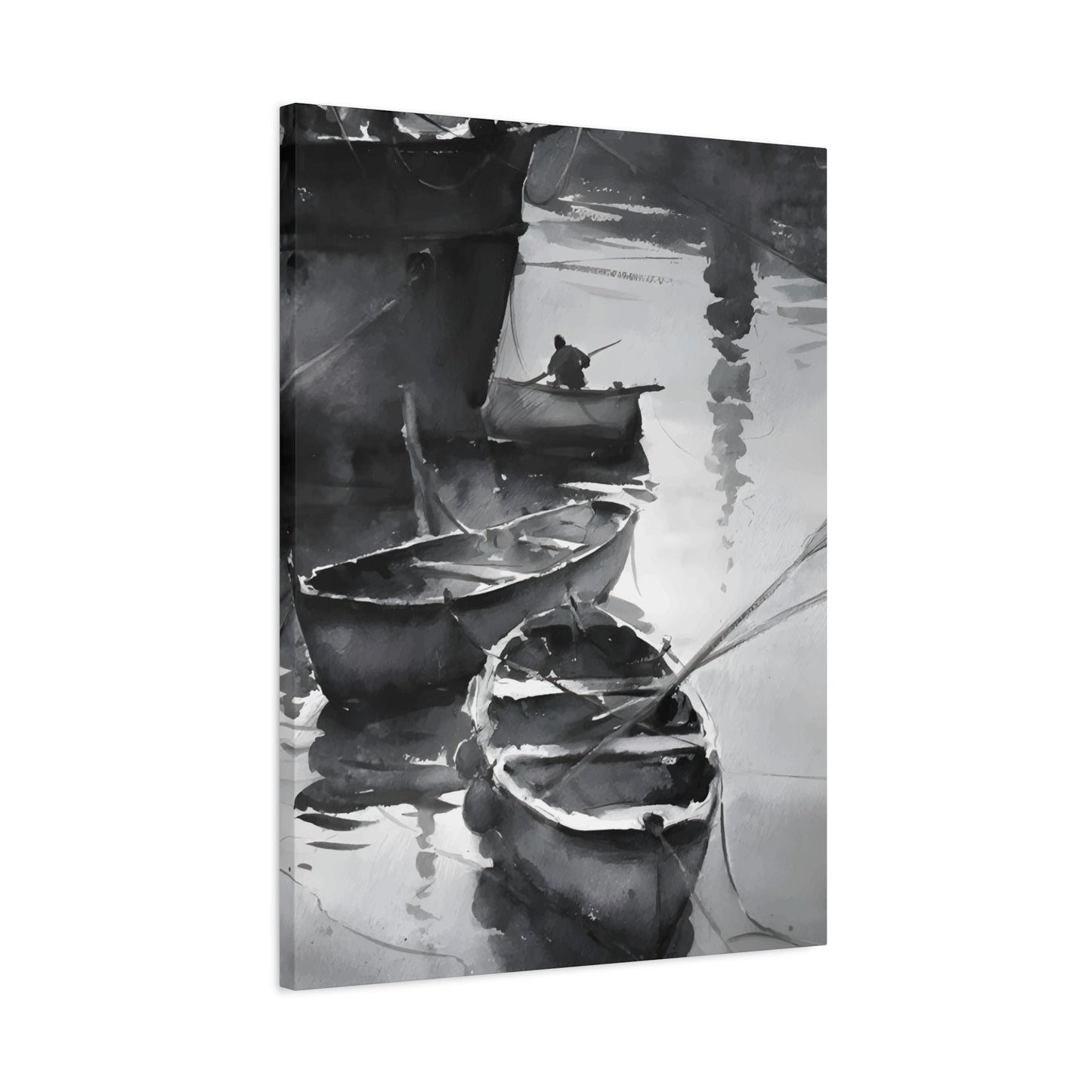
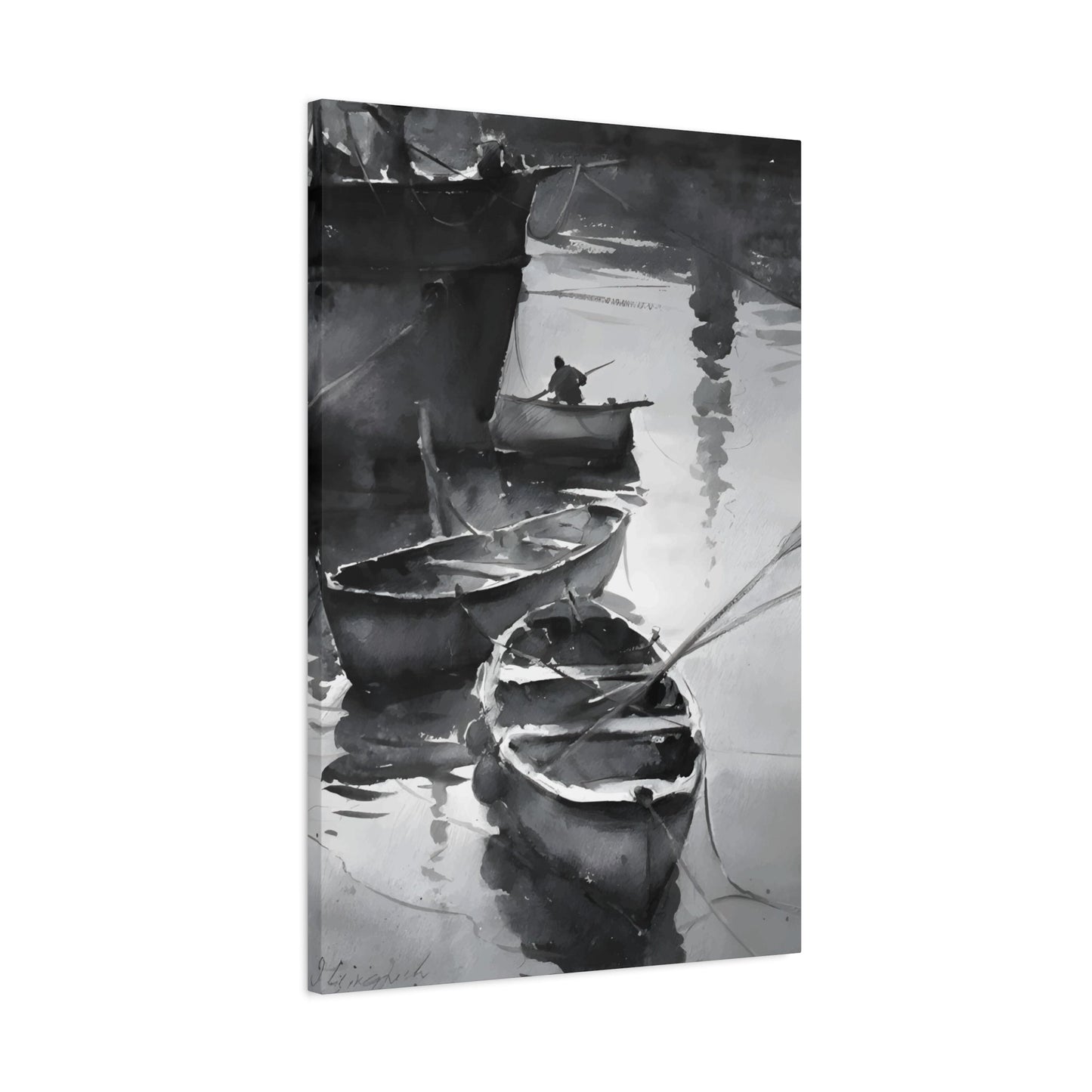
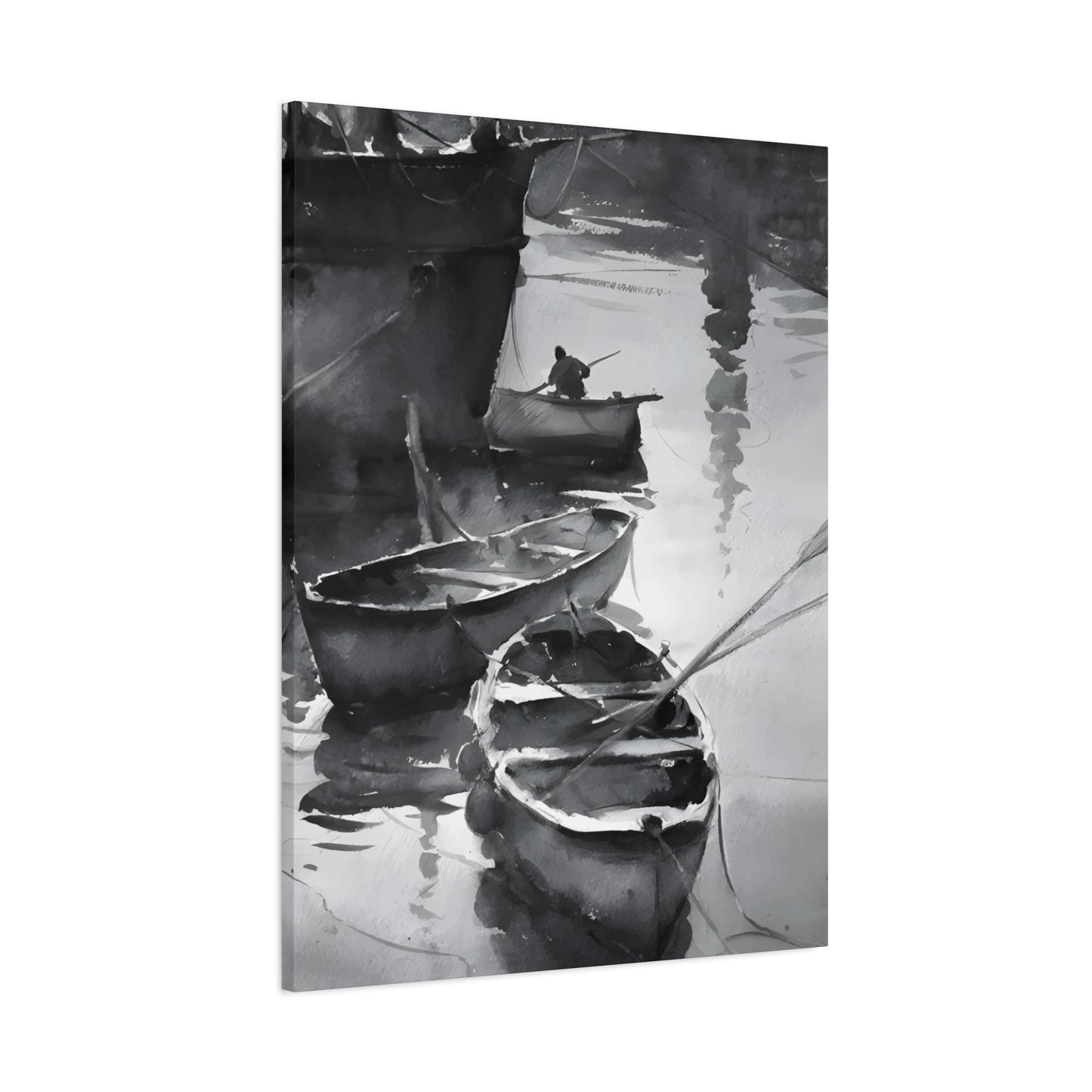
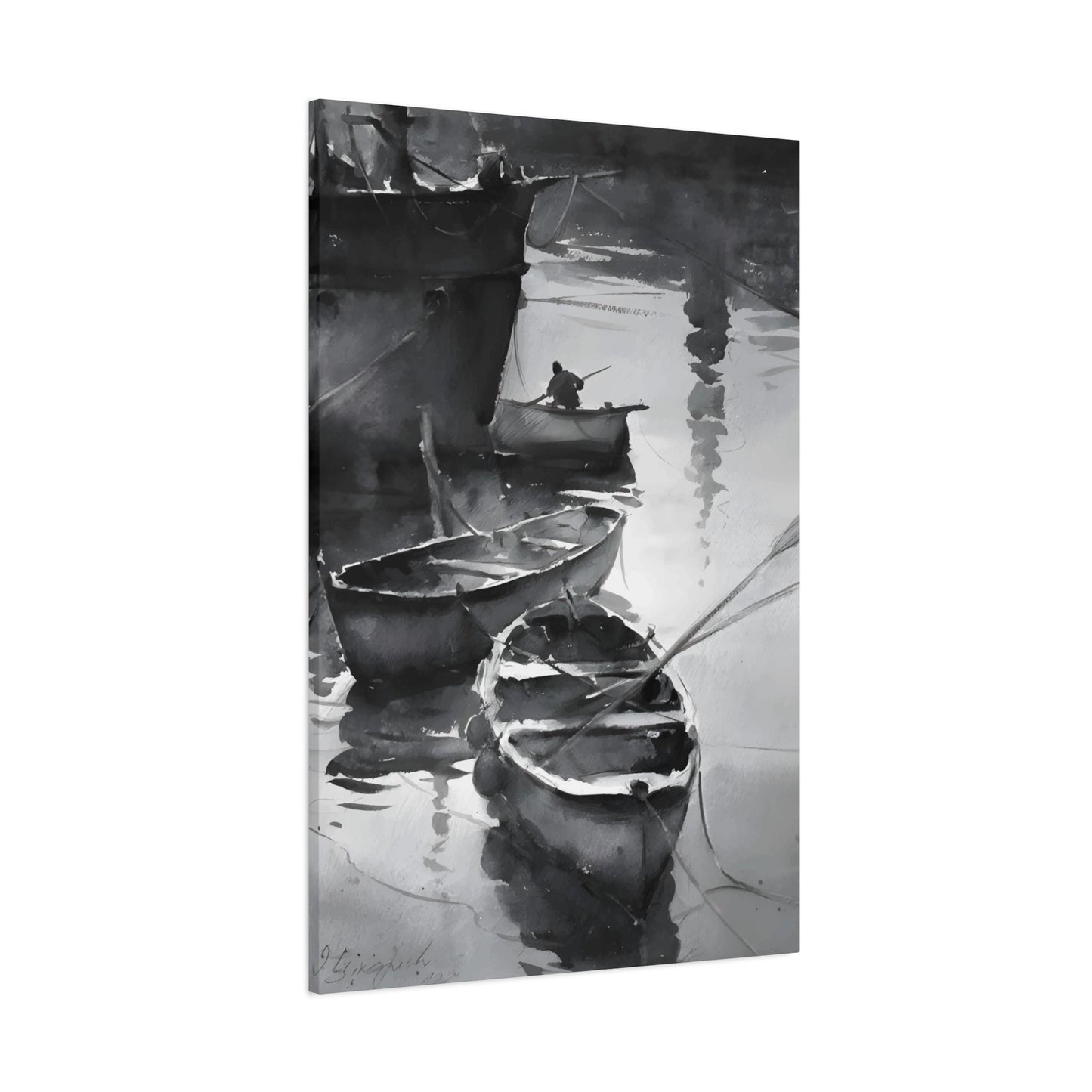
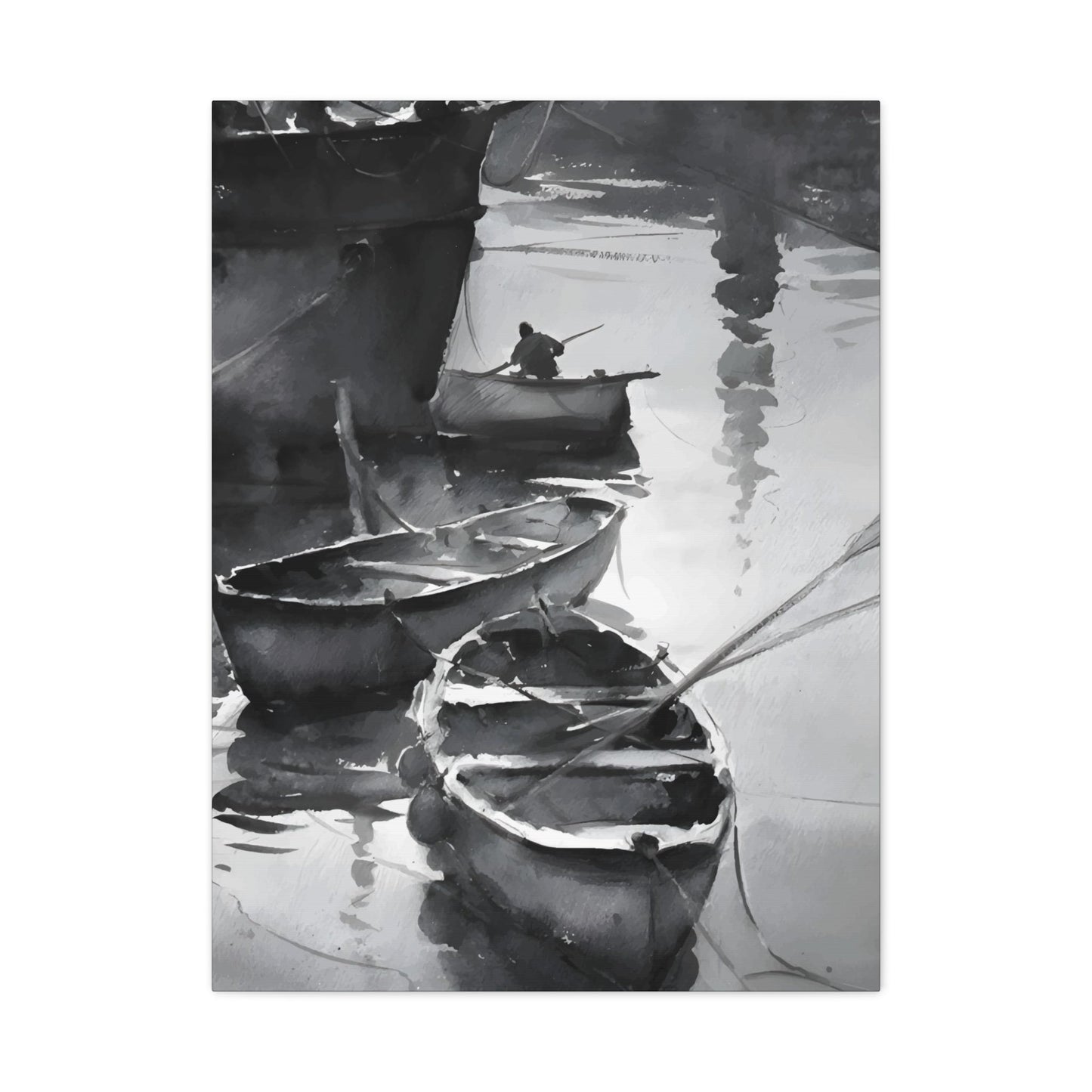
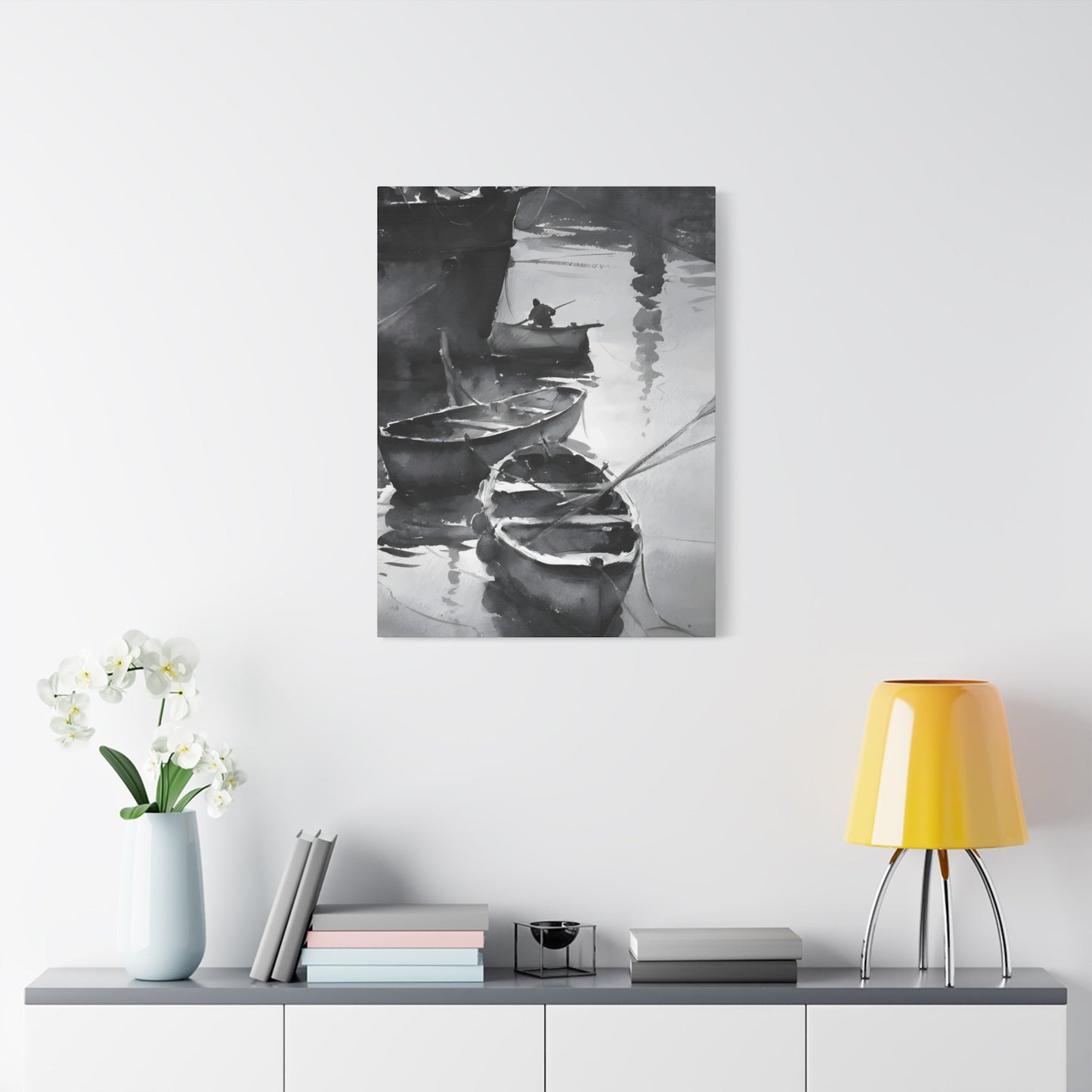
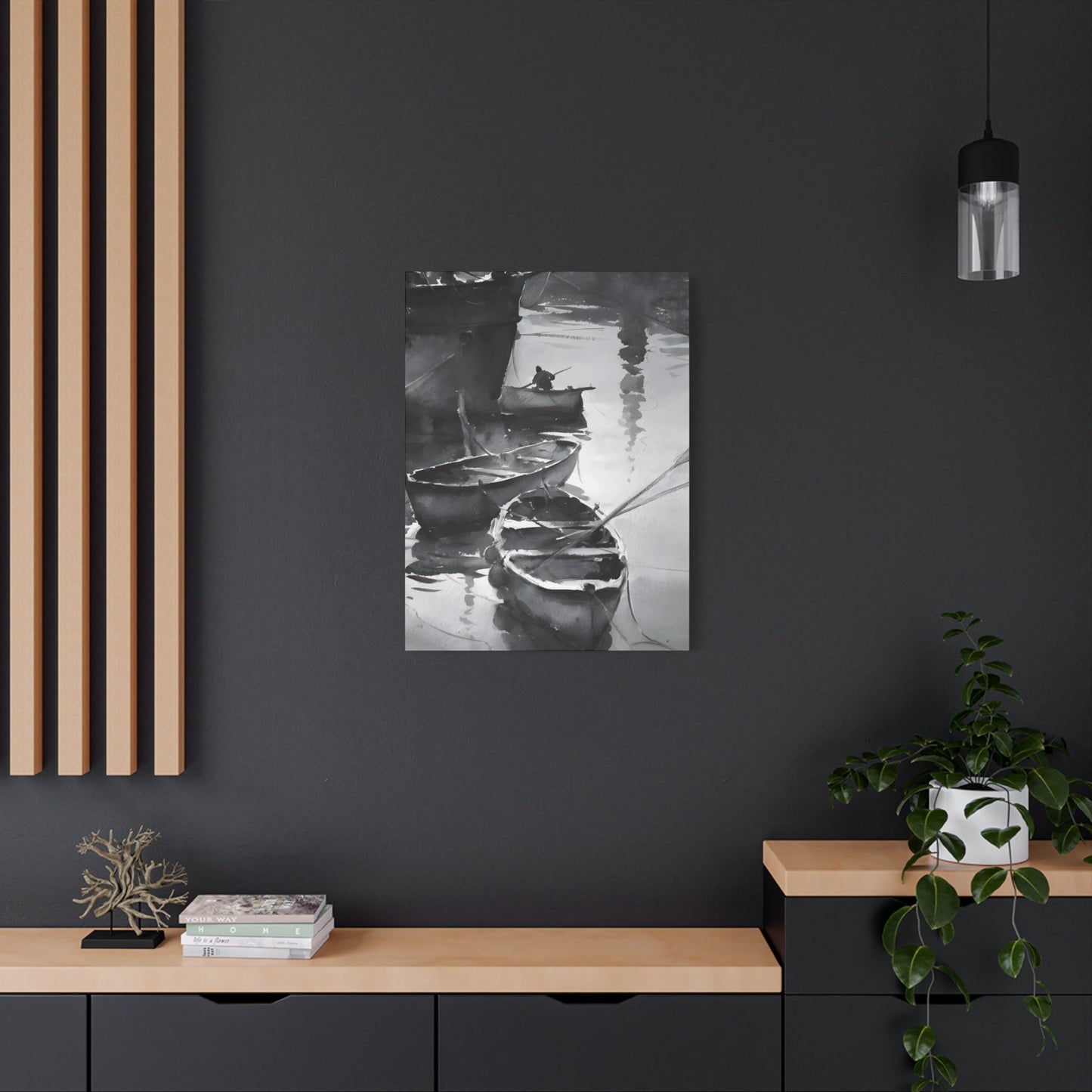
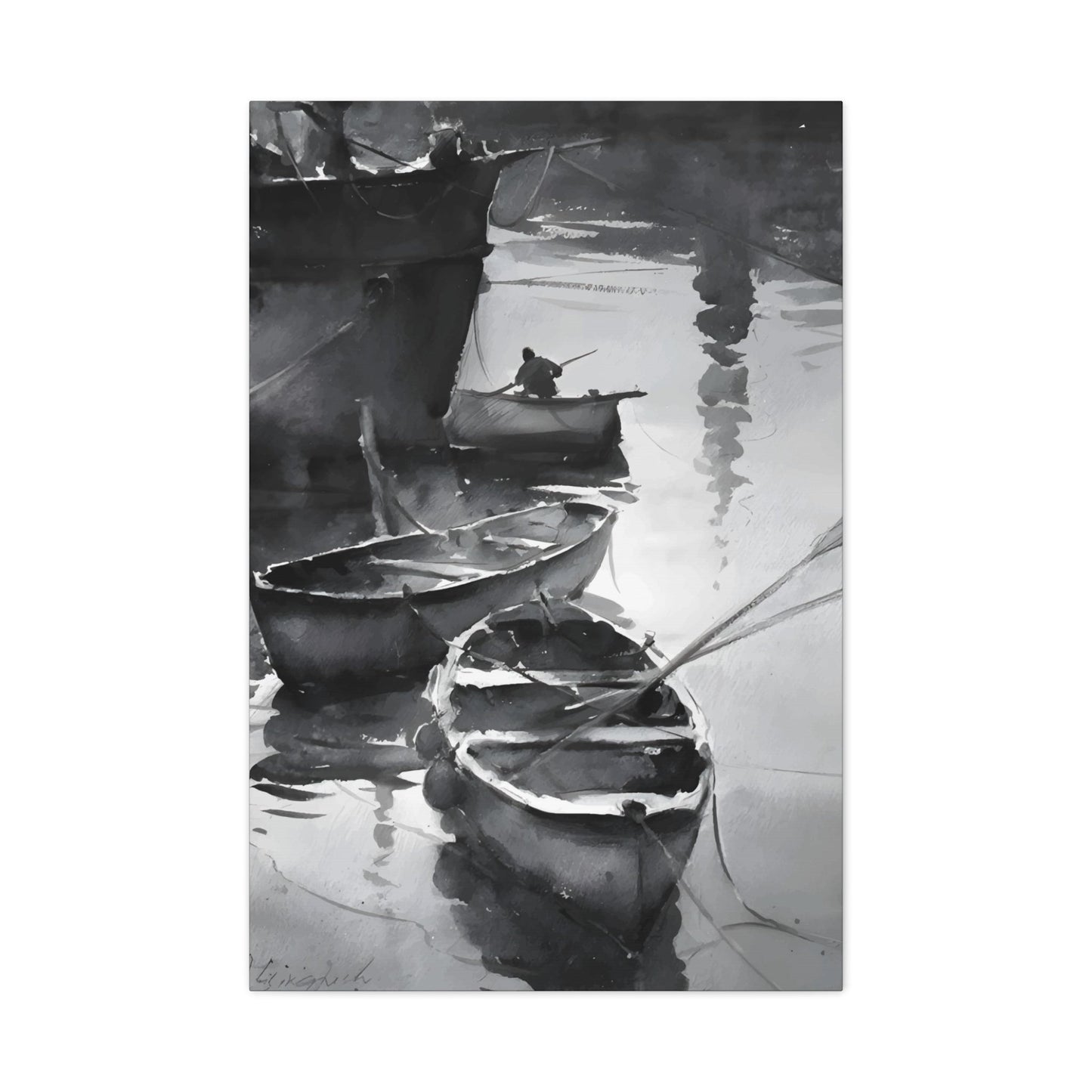
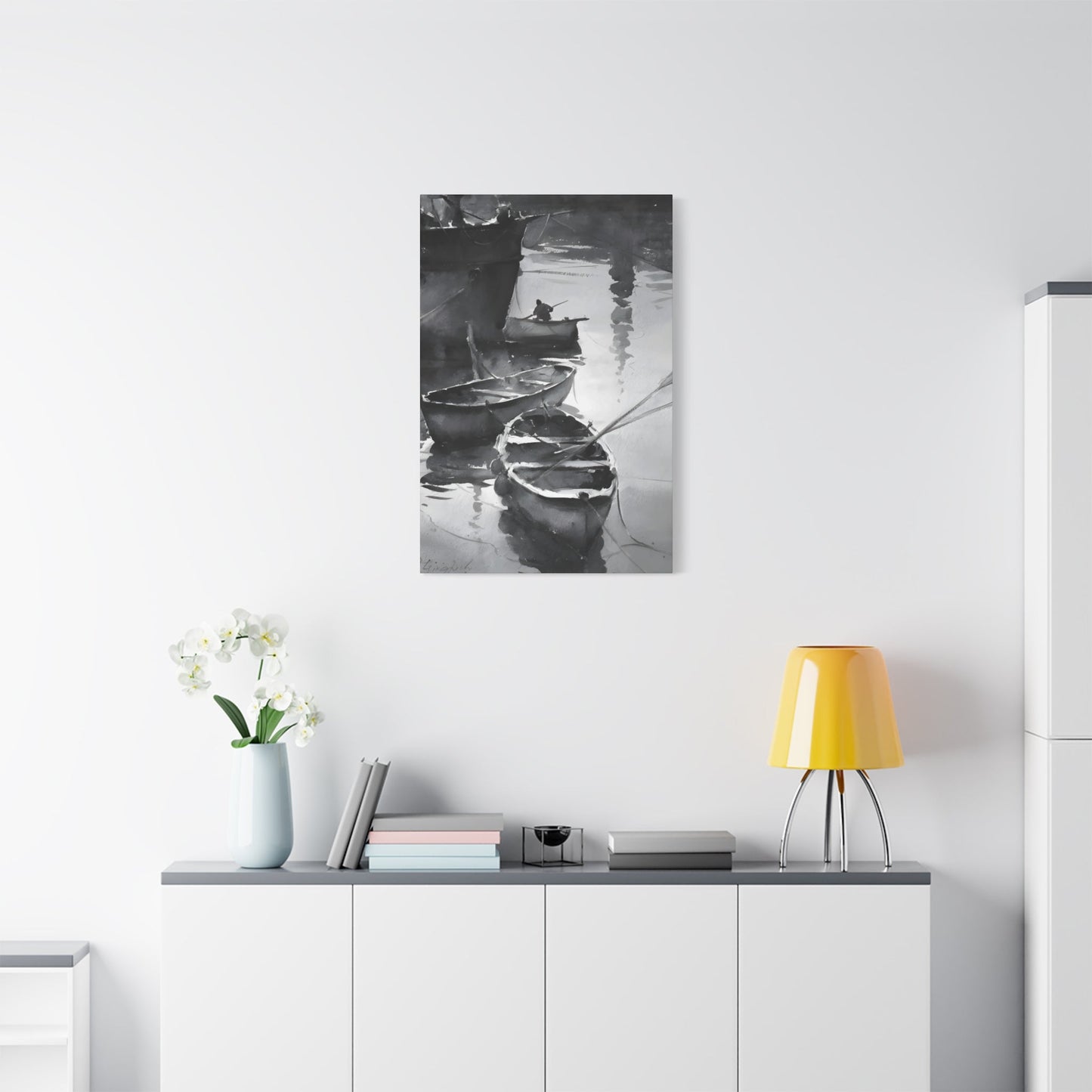
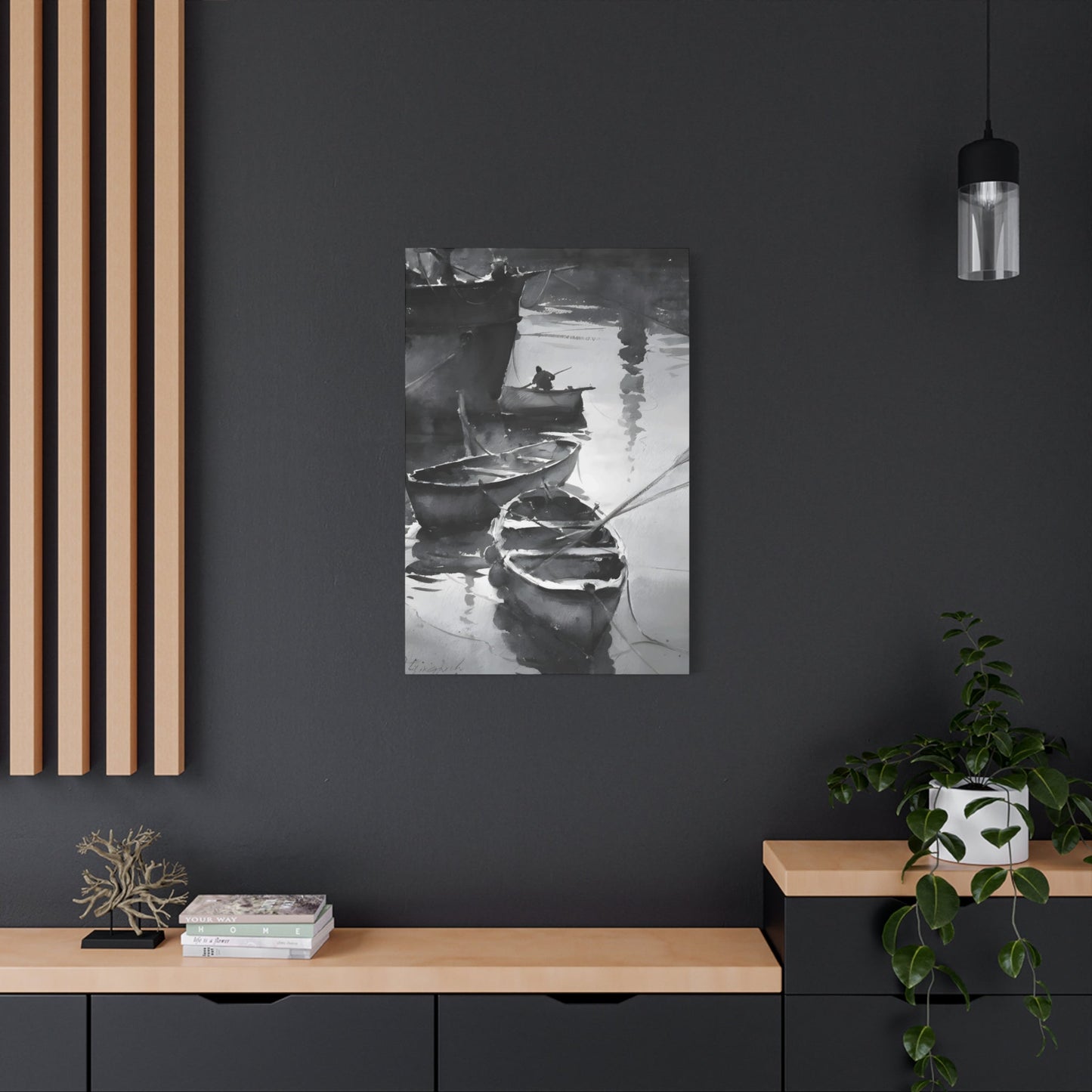
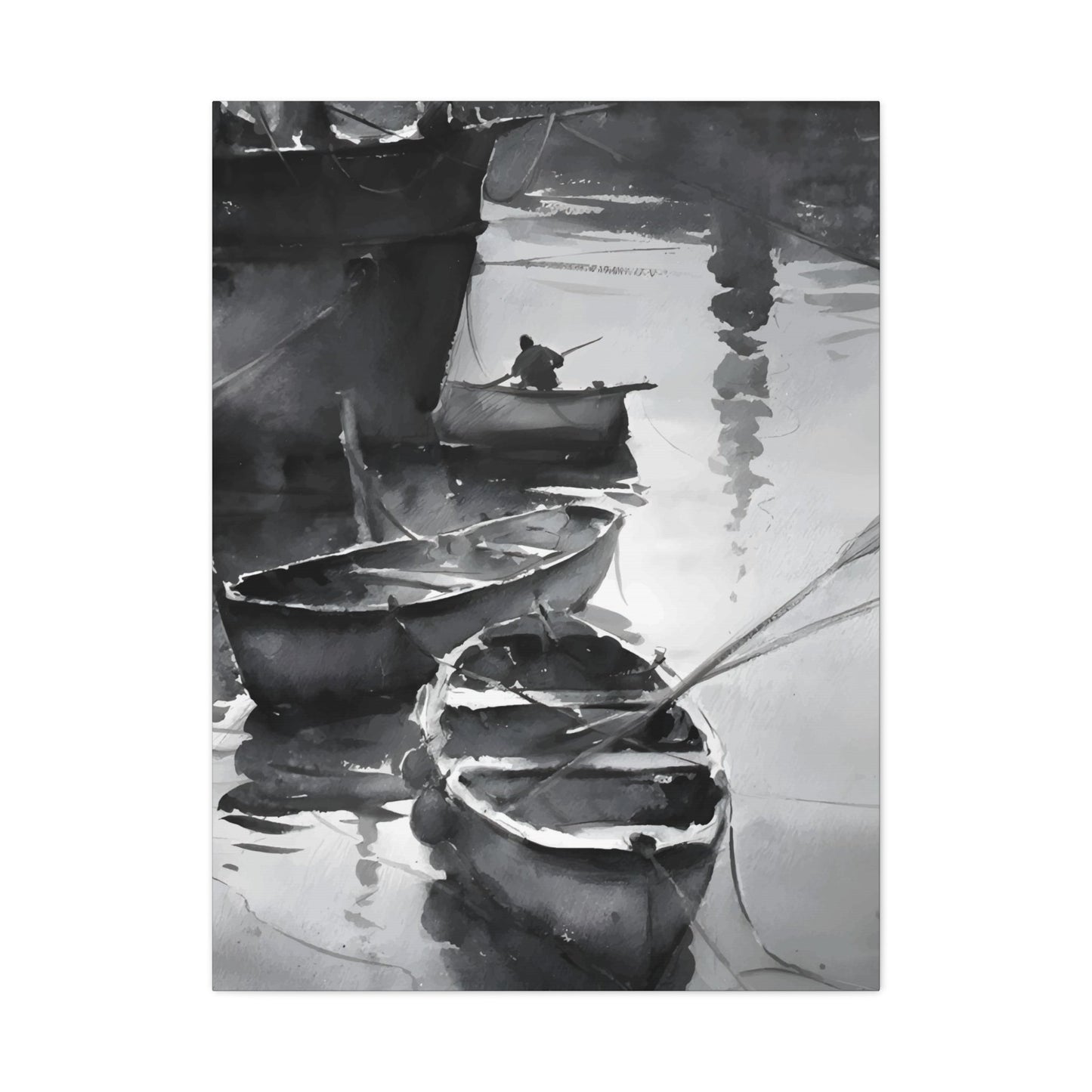
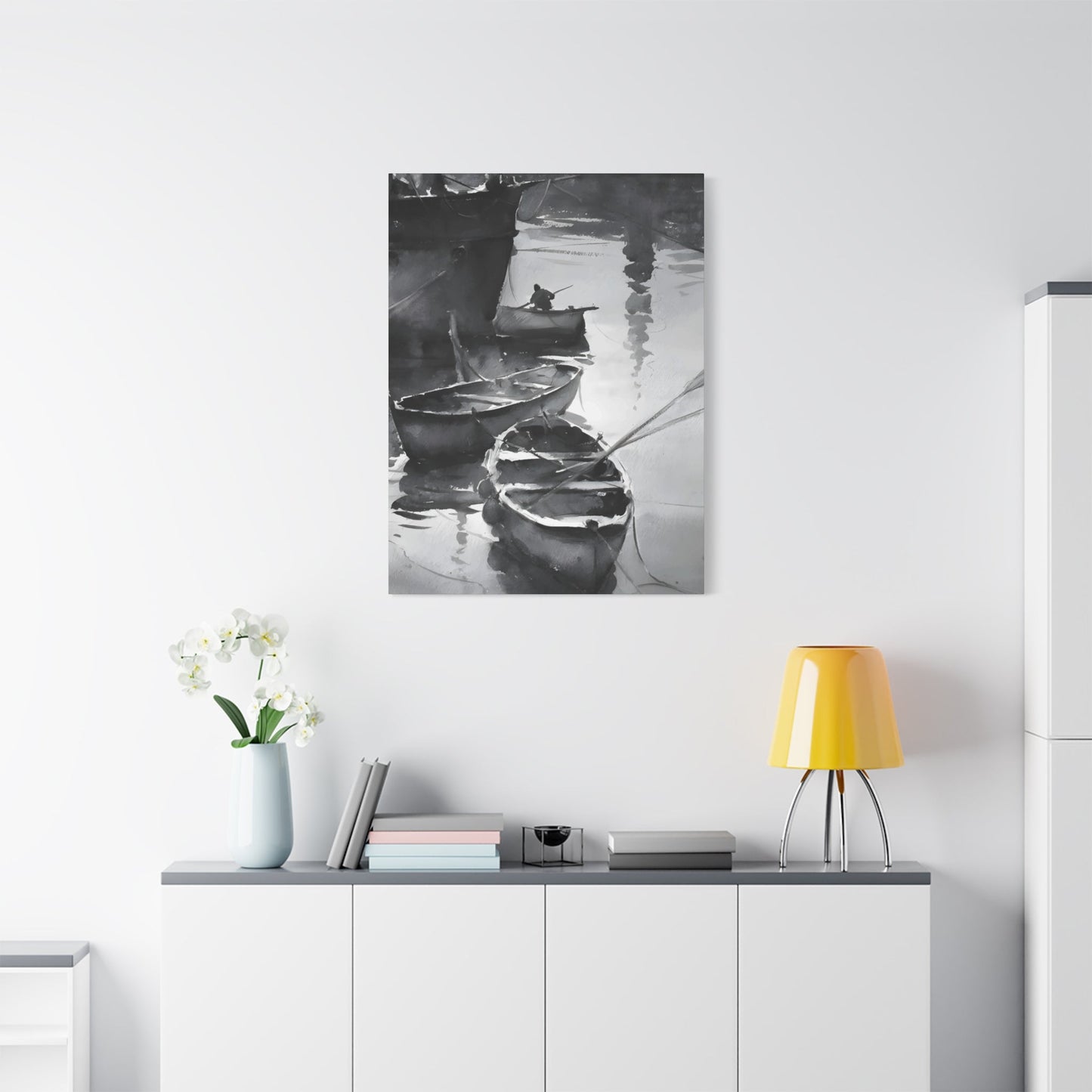
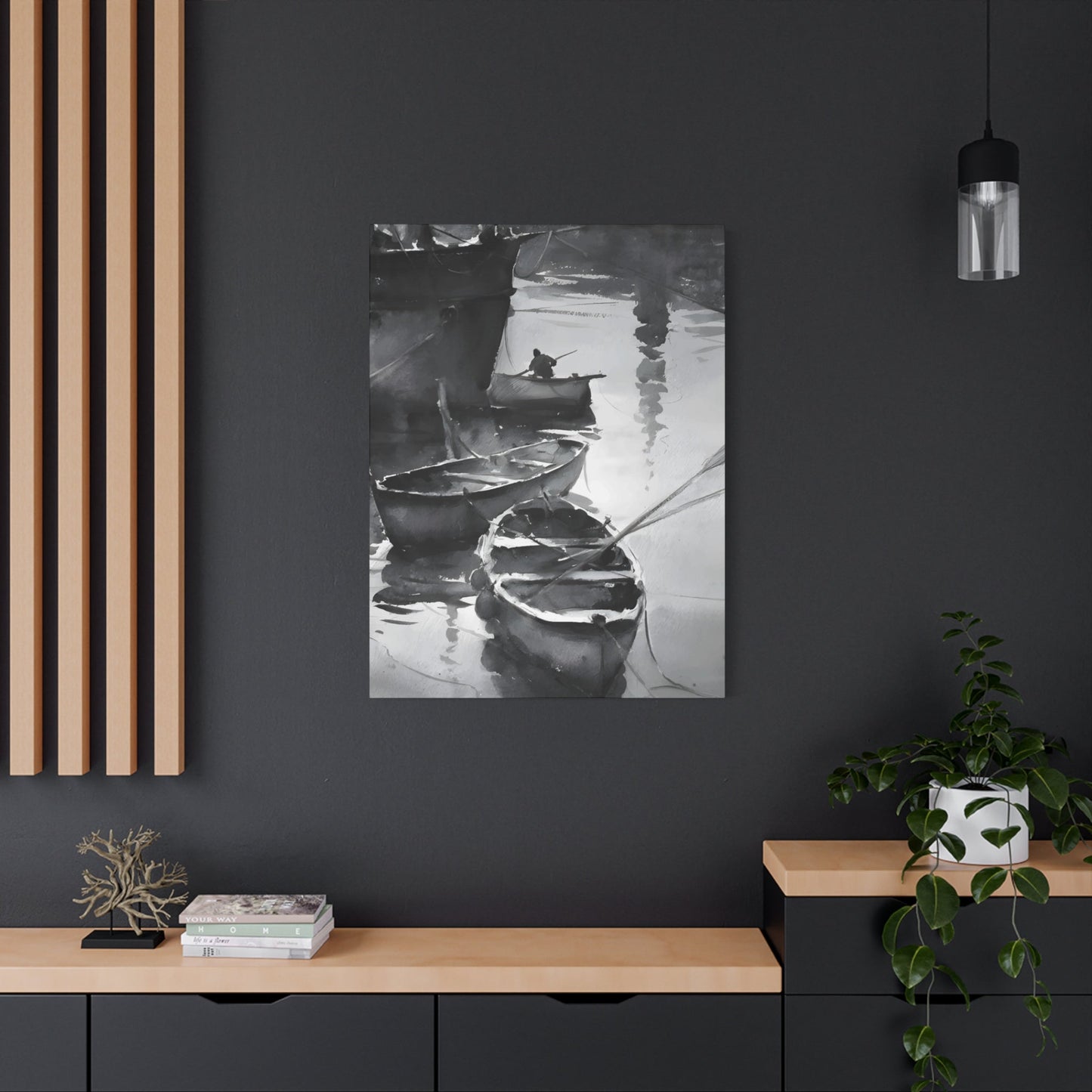
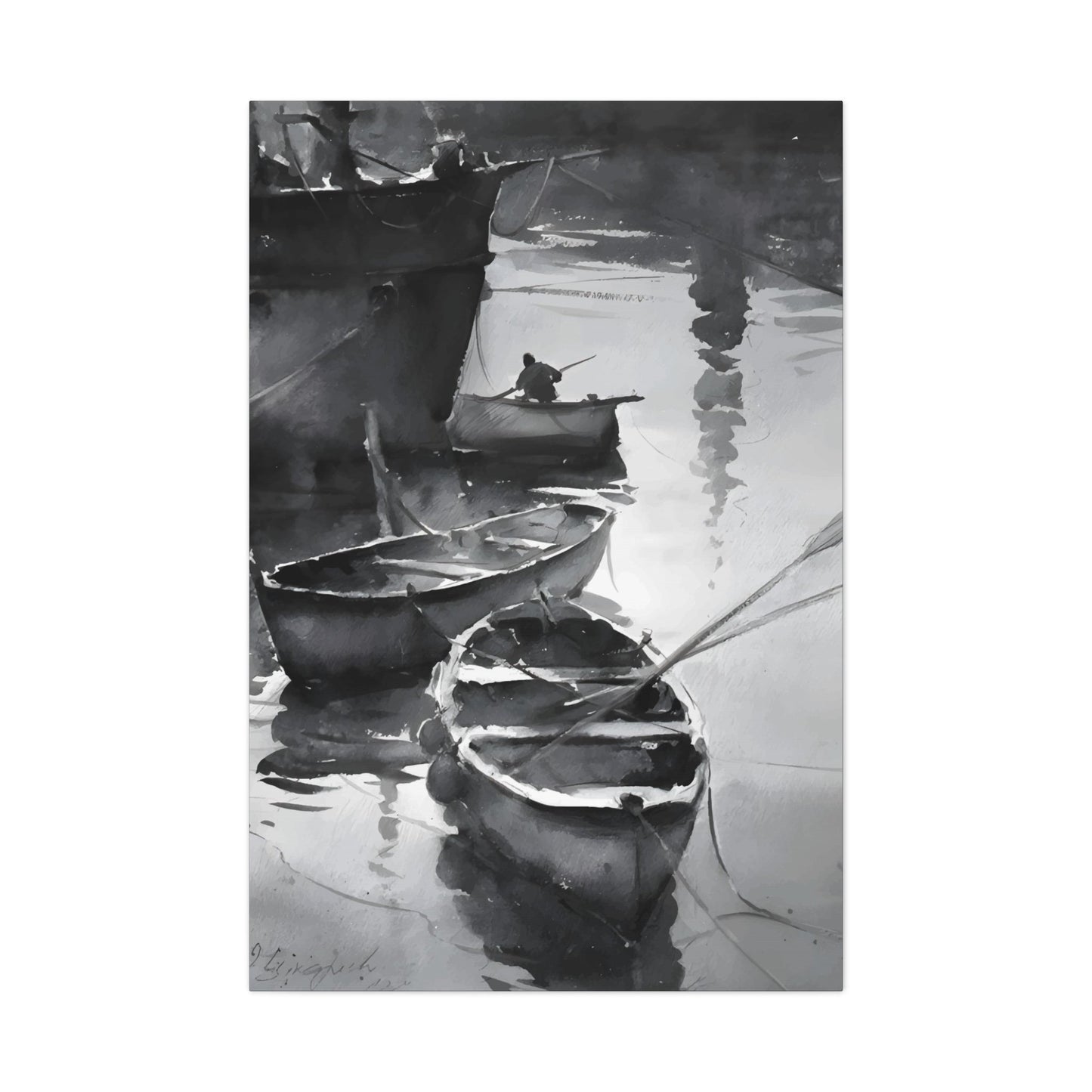
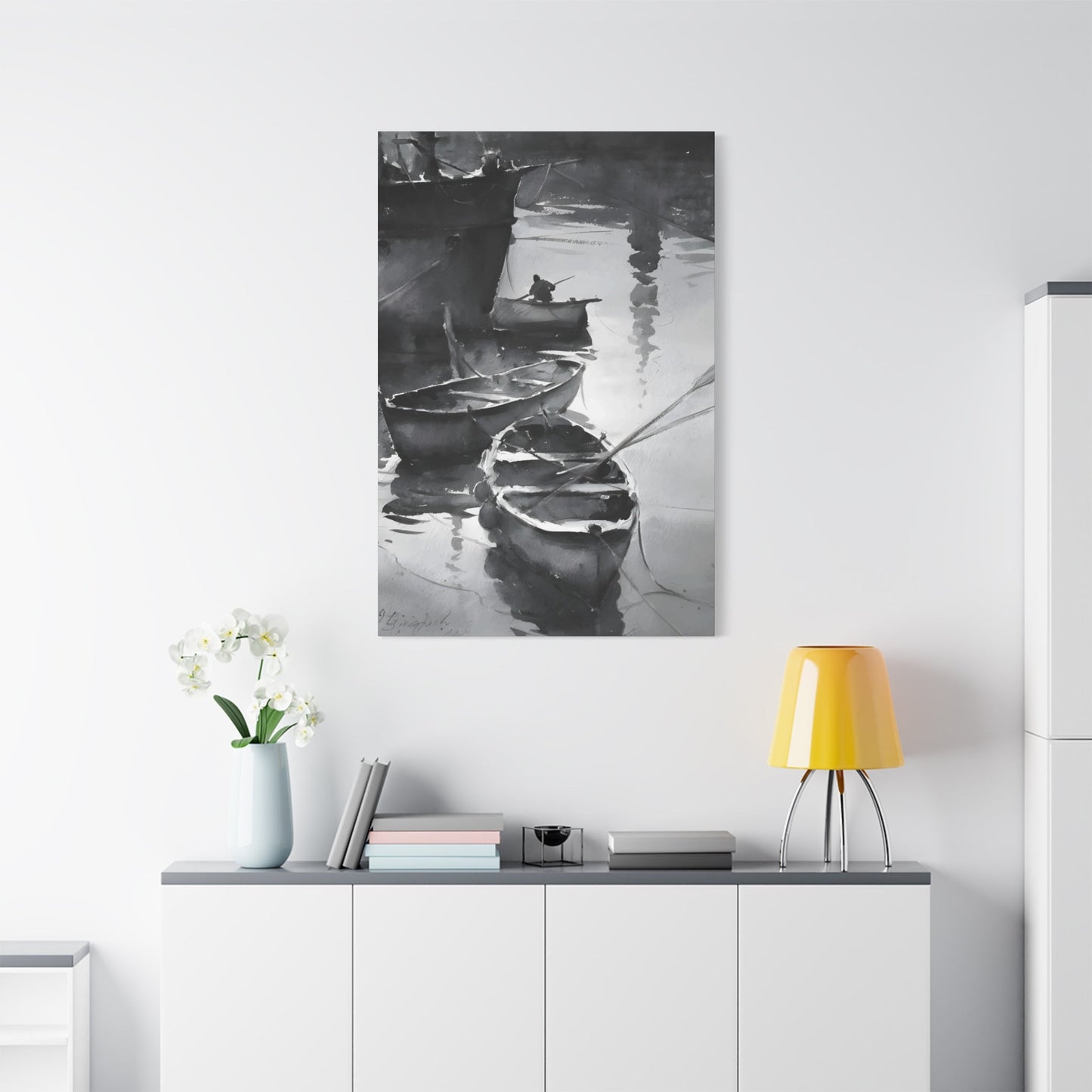
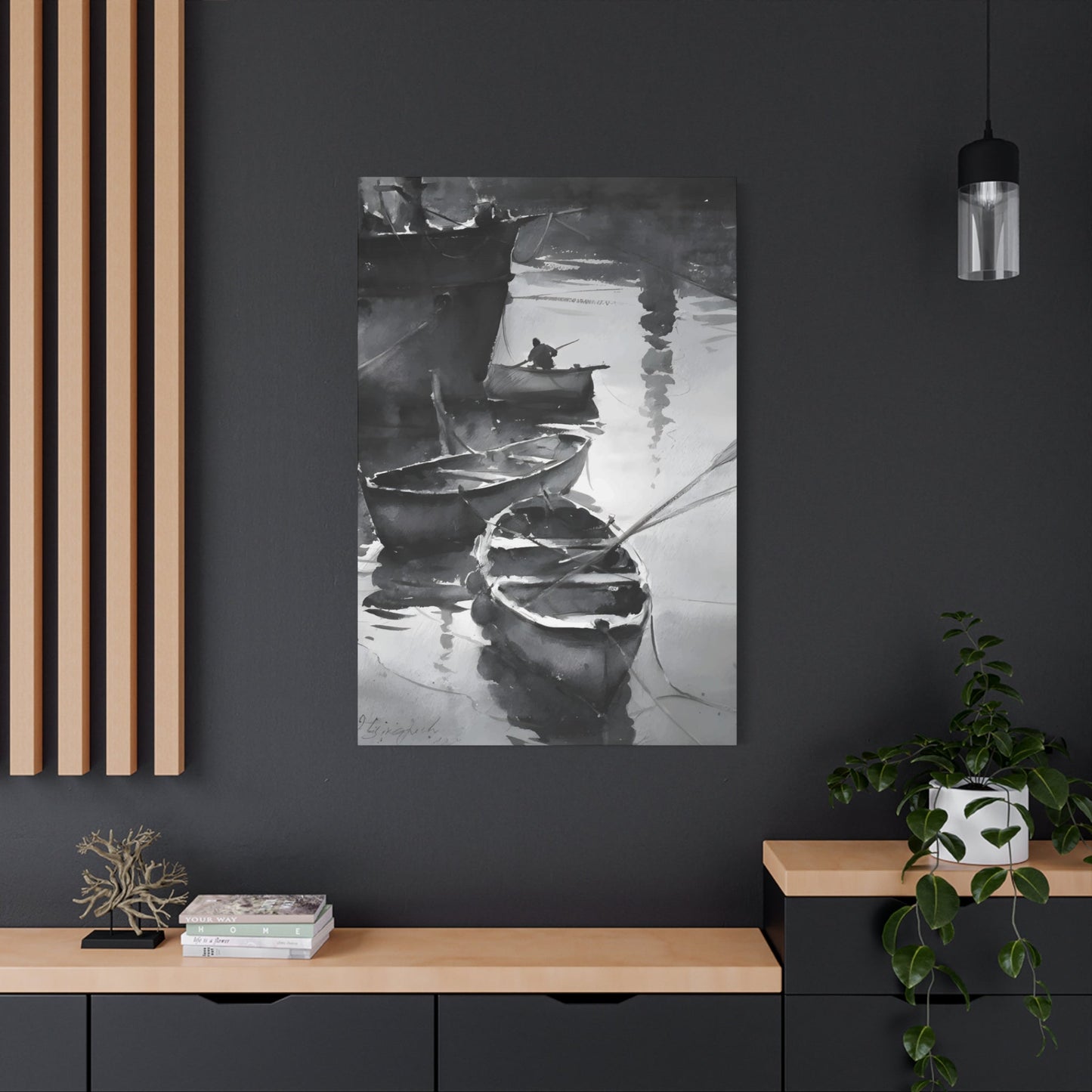
Maritime Canvas Masterpieces: Your Essential Guide to Boat Oil Painting Wall Art
The world of maritime art has captivated collectors and art enthusiasts for centuries, with boat oil paintings standing as timeless representations of humanity's relationship with the sea. These masterful works combine technical skill with emotional depth, creating visual narratives that transport viewers to windswept harbors, tranquil bays, and adventurous oceanic journeys. Whether you're an aspiring collector, interior design enthusiast, or simply someone drawn to the magnetic appeal of nautical themes, boat oil paintings offer an unparalleled way to bring the romance and mystery of the sea into your living space.
The enduring popularity of maritime art stems from its ability to evoke powerful emotions and memories. These paintings don't merely depict vessels floating on water; they capture moments of human endeavor, natural beauty, and the eternal dance between man and nature. From the golden age of sailing ships to modern yachts cutting through azure waves, boat oil paintings serve as windows into different eras, cultures, and artistic movements that have shaped our visual heritage.
Textural Richness and Visual Depth in Maritime Canvas Art
The magic of boat oil paintings lies in their incredible textural variety, which artists achieve through masterful manipulation of paint consistency, brush techniques, and layering methods. Oil paint's inherent properties allow artists to create everything from smooth, mirror-like water surfaces to rough, weathered ship hulls and billowing canvas sails. This medium's versatility enables painters to capture the complex interplay of light, shadow, and movement that defines maritime scenes.
When examining high-quality boat oil paintings, you'll notice how artists build texture through impasto techniques, where thick applications of paint create three-dimensional surfaces that seem to leap from the canvas. The gentle ripples of calm harbor water might be rendered with delicate, horizontal brush strokes, while stormy seas require bold, dynamic applications of paint that follow the natural flow of crashing waves. Ship hulls often showcase the artist's ability to depict various materials, from polished wood to weathered metal, each requiring different textural approaches.
The sails of boats present particularly fascinating textural challenges for oil painters. Artists must convey the weight and movement of fabric catching wind, often using techniques that suggest both the transparency of billowing canvas and the solid presence of masts and rigging. Some painters achieve this through glazing techniques, building up translucent layers that allow underlying colors to show through, creating the illusion of light filtering through sail cloth.
Water itself offers endless textural possibilities in boat oil paintings. Artists might use palette knife techniques to create the sharp edges of wave crests, while employing soft brush work for the smooth troughs between swells. The reflection of boats on water surfaces requires particular skill, as artists must balance accurate representation with artistic interpretation, often breaking up reflections with subtle horizontal strokes that suggest the water's movement.
The sky in maritime paintings contributes significantly to the overall textural composition. Cloud formations, whether depicting fair weather cumulus or threatening storm systems, require different approaches. Some artists use dry brush techniques to suggest wispy cirrus clouds, while others employ wet-on-wet methods to create the soft, voluminous appearance of storm clouds gathering on the horizon.
Background elements like distant shorelines, harbor structures, and other vessels add layers of textural interest that enhance the painting's overall depth and realism. These elements are typically rendered with less detail than foreground subjects, but their textural treatment remains crucial for creating convincing atmospheric perspective.
Selecting the Ideal Maritime Artwork for Your Living Space
Choosing the perfect boat oil painting for your home involves careful consideration of multiple factors, including size, color palette, artistic style, and the emotional atmosphere you wish to create. The right maritime artwork should complement your existing decor while serving as a compelling focal point that draws viewers into its nautical narrative.
Size considerations play a crucial role in selection. Large-scale boat oil paintings can serve as dramatic statement pieces in spacious rooms, commanding attention and creating immediate visual impact. These substantial works are particularly effective above fireplaces, behind dining tables, or as the centerpiece of living room arrangements. Medium-sized paintings offer versatility, working well in bedrooms, studies, or as part of gallery wall arrangements. Smaller maritime works can serve as accent pieces, perfect for hallways, powder rooms, or intimate spaces where subtle nautical references enhance rather than dominate the decor.
Color harmony between your chosen boat oil painting and existing room elements ensures cohesive interior design. Paintings dominated by cool blues and greens naturally complement coastal and contemporary decor schemes, while works featuring warmer tones like golden sunsets or rich brown ship hulls might better suit traditional or rustic interiors. Consider how the painting's color palette interacts with your furniture, wall colors, and other decorative elements.
The artistic style of boat oil paintings varies dramatically, from photorealistic representations to impressionistic interpretations and contemporary abstract approaches. Realistic maritime paintings appeal to viewers who appreciate technical skill and detailed depiction of nautical subjects. These works often feature meticulous attention to rigging details, accurate boat proportions, and convincing water effects that create almost photographic quality.
Impressionistic boat paintings prioritize mood and atmosphere over precise detail, using loose brushwork and simplified forms to capture the essence of maritime scenes. These works often emphasize light effects and color relationships, creating dreamy, romantic interpretations of nautical subjects that work well in relaxed, informal settings.
Contemporary and abstract approaches to boat oil painting might simplify forms to their essential elements, use unexpected color combinations, or incorporate modern compositional techniques. These works appeal to collectors who appreciate innovation and artistic experimentation within maritime themes.
Subject matter within boat oil painting encompasses vast possibilities. Peaceful harbor scenes with moored sailboats create calming, contemplative atmospheres suitable for bedrooms and quiet spaces. Dynamic sailing scenes with boats cutting through waves generate energy and movement, making them ideal for active living areas. Historical maritime subjects, featuring tall ships or traditional fishing vessels, add cultural depth and storytelling elements to any space.
The painting's condition and provenance also influence selection decisions. Original works by established artists carry different considerations than reproductions or works by emerging artists. Authentication, conservation needs, and investment potential become relevant factors for serious collectors.
Framing choices significantly impact how boat oil paintings integrate with home decor. Traditional gold frames suit classic maritime subjects and formal interiors, while modern minimalist frames work better with contemporary nautical art. The frame should enhance rather than compete with the artwork, creating a polished presentation that respects both the painting and its surroundings.
Interior Design Strategies with Nautical Canvas Art
Incorporating boat oil paintings into your home decor requires thoughtful planning to achieve balanced, harmonious results that enhance both the artwork and your living space. Successful integration depends on understanding how maritime art interacts with architectural elements, lighting conditions, and existing furnishings to create cohesive design schemes.
Placement strategies for boat oil paintings should consider both visual impact and practical concerns. Eye-level hanging ensures comfortable viewing, typically positioning the artwork's center between 57 and 60 inches from the floor. In spaces with high ceilings, slightly higher placement prevents the artwork from feeling dwarfed by surrounding architecture. Above furniture arrangements, paintings should relate proportionally to the pieces below them, generally spanning two-thirds to three-quarters of the furniture's width.
Lighting plays a crucial role in displaying boat oil paintings effectively. Natural light can enhance the colors and textures of maritime art, but direct sunlight should be avoided to prevent fading and damage. Picture lighting or track lighting systems provide controlled illumination that highlights the painting's details without creating glare. LED lighting options offer energy efficiency and reduced heat generation, important considerations for artwork preservation.
Color coordination between boat oil paintings and room elements creates visual harmony. Paintings featuring predominantly blue and white color schemes naturally complement nautical-themed rooms with similar palettes. However, maritime art can also serve as accent pieces in rooms with contrasting color schemes, where the painting's nautical blues provide cooling contrast to warm-toned interiors.
Grouping strategies for multiple boat oil paintings require careful consideration of scale, style, and spacing. Gallery wall arrangements can showcase collections of smaller maritime works, creating visual interest through varied sizes while maintaining thematic unity. Symmetrical arrangements suit formal spaces, while asymmetrical groupings create more dynamic, casual presentations.
Complementary decor elements enhance the impact of boat oil paintings. Nautical accessories like ship models, maritime instruments, or coastal artifacts create thematic consistency without overwhelming the space. Natural materials such as weathered wood, rope details, and sea glass accents reinforce maritime themes while adding textural interest.
Room-specific considerations influence how boat oil paintings function within different spaces. In living rooms, maritime art can establish the overall design theme, with supporting elements reinforcing nautical motifs. Bedrooms benefit from calmer maritime scenes that promote relaxation, such as peaceful harbor views or gentle seascapes. Dining rooms can accommodate more dramatic nautical subjects, where the social nature of the space supports engaging, conversation-worthy artwork.
Scale relationships between boat oil paintings and furniture require careful attention. Large paintings need substantial furniture pieces to create balanced compositions, while smaller maritime works can complement delicate or minimal furnishings. The visual weight of the painting should correspond appropriately to surrounding elements.
Architectural considerations affect how boat oil paintings integrate with structural elements. High ceilings can accommodate large-scale maritime art, while lower ceilings might be overwhelmed by substantial paintings. Built-in shelving, fireplaces, and window placements all influence optimal artwork positioning.
Seasonal flexibility allows boat oil paintings to adapt to changing decor needs. Maritime art works particularly well in summer design schemes, but can be balanced with warmer accessories during colder months to maintain year-round appeal.
Historical Development of Maritime Scene Painting
The tradition of depicting boats and maritime scenes in oil paintings stretches back centuries, evolving alongside developments in artistic techniques, cultural attitudes toward the sea, and historical events that shaped humanity's relationship with maritime endeavors. This rich history provides context for understanding contemporary boat oil paintings and their place within broader artistic traditions.
Early maritime painting emerged during the Dutch Golden Age of the 17th century, when the Netherlands' economic prosperity depended heavily on maritime trade and naval power. Dutch artists like Willem van de Velde the Elder and his son Willem van de Velde the Younger established foundational approaches to marine painting, emphasizing accurate ship depictions and atmospheric effects that captured both the beauty and danger of sea voyages.
These pioneering marine artists worked closely with shipbuilders and sailors, ensuring technical accuracy in their depictions of vessel construction, rigging systems, and sailing techniques. Their paintings served both artistic and documentary purposes, recording important naval battles, celebrating maritime achievements, and satisfying the growing merchant class's desire for artwork that reflected their source of prosperity.
The 18th century saw maritime painting spread throughout Europe, with each nation developing distinctive approaches to nautical subjects. British marine artists like Nicholas Pocock and Dominic Serres focused on naval warfare and exploration themes, reflecting Britain's growing maritime empire. French marine painters emphasized the romantic and adventurous aspects of sea voyages, while Italian artists often depicted Mediterranean fishing vessels and coastal scenes.
Romantic period influences in the early 19th century transformed maritime painting from primarily documentary art to more expressive, emotional interpretations of humanity's relationship with the sea. Artists like J.M.W. Turner pushed the boundaries of marine painting, using dramatic light effects and bold color choices to convey the sublime power of oceanic forces. Turner's innovative techniques influenced generations of subsequent marine artists and established new possibilities for maritime expression.
American marine painting developed its own character during the 19th century, reflecting the young nation's growing maritime industry and westward expansion. Artists like Fitz Henry Lane and Martin Johnson Heade created distinctly American approaches to marine subjects, often featuring local vessels and coastal scenes that celebrated regional maritime culture.
The Industrial Revolution brought significant changes to both maritime technology and marine painting. Steam-powered vessels began appearing alongside traditional sailing ships, challenging artists to adapt their techniques to depict new forms of marine transportation. Some artists embraced these technological changes, while others maintained focus on traditional sailing vessels that many viewed as more aesthetically pleasing.
Impressionist influences in the late 19th century revolutionized maritime painting techniques. Artists began prioritizing light effects and atmospheric conditions over precise detail, leading to more spontaneous, emotionally evocative interpretations of maritime subjects. Claude Monet's various harbor scenes exemplified this new approach, capturing fleeting light conditions and weather effects with loose, expressive brushwork.
The 20th century brought further evolution to maritime painting as artists experimented with modernist techniques and abstract approaches. Some marine artists maintained traditional representational methods, while others incorporated cubist, expressionist, or abstract elements into their nautical subjects.
Contemporary maritime painting continues evolving, with artists exploring new materials, techniques, and conceptual approaches while maintaining connections to historical traditions. Digital technologies now influence some marine artists, though oil painting remains the preferred medium for many practitioners due to its versatility and historical associations with maritime art.
Regional variations in maritime painting reflect local maritime cultures and geographical conditions. Mediterranean marine paintings often emphasize warm colors and calm waters, while Northern European maritime art typically features cooler palettes and more dramatic weather conditions. These regional characteristics continue influencing contemporary boat oil paintings, providing rich source material for artists working within maritime traditions.
The collecting of maritime paintings has its own historical development, with royal courts, wealthy merchants, and naval institutions commissioning and acquiring marine art for centuries. This patronage system supported marine artists and helped establish maritime painting as a respected artistic genre with its own conventions, techniques, and subject matter.
Celebrated Marine Artists and Their Nautical Masterworks
The world of maritime art has been enriched by numerous talented artists whose boat oil paintings have achieved lasting recognition for their technical excellence, emotional depth, and contribution to nautical artistic traditions. These masters of marine painting have each brought unique perspectives and innovative techniques to the depiction of vessels, seascapes, and maritime life.
J.M.W. Turner stands among the most revolutionary marine artists in history, transforming maritime painting from precise documentary art into expressive, atmospheric interpretation. His boat oil paintings pushed the boundaries of what marine art could achieve, using bold color choices and innovative brushwork to capture the sublime power of natural forces. Works like "The Fighting Temeraire" demonstrate Turner's ability to combine historical significance with emotional resonance, creating maritime paintings that function as both artistic masterpieces and cultural commentary.
Turner's approach to depicting water revolutionized marine painting techniques. Rather than rendering water as a static surface, he captured its constant movement and changing light conditions through loose, energetic brushwork that suggested rather than precisely defined aquatic forms. His skies, often dominating his maritime compositions, showcase spectacular light effects that convey both the beauty and terror of oceanic environments.
Winslow Homer emerged as America's premier marine artist during the late 19th century, creating boat oil paintings that captured the rugged character of coastal life with unprecedented honesty and power. His works avoided romanticizing maritime subjects, instead presenting the harsh realities of life dependent on the sea. Paintings like "The Gulf Stream" demonstrate Homer's ability to combine technical skill with emotional intensity, creating maritime art that resonates with universal themes of human struggle and survival.
Homer's technique emphasized direct observation and bold, confident brushwork that conveyed both the physical presence of his subjects and the challenging conditions they faced. His color choices often featured muted palettes that reflected the actual conditions of working maritime environments rather than idealized artistic conventions.
Ivan Aivazovsky, the Russian master of marine painting, created some of history's most dramatic and technically accomplished seascapes. His boat oil paintings demonstrate extraordinary skill in depicting water in all its forms, from calm, reflective surfaces to towering waves and stormy seas. Aivazovsky's ability to capture light effects on water remains unmatched, with his paintings featuring luminous, almost supernatural quality that elevates maritime subjects to spiritual significance.
The scale and ambition of Aivazovsky's maritime paintings set them apart from many contemporaneous works. His large canvases allowed for spectacular depictions of naval battles, shipwrecks, and oceanic storms that immersed viewers in dramatic nautical narratives. His technical innovations in depicting translucent water and atmospheric effects influenced marine artists worldwide.
Claude Monet's contribution to maritime painting came through his impressionist approach to harbor and coastal scenes. While not exclusively a marine artist, his boat oil paintings revolutionized how artists depicted maritime subjects, prioritizing fleeting light effects and atmospheric conditions over precise detail. His series of harbor paintings at Le Havre and other coastal locations demonstrate how impressionist techniques could capture the essence of maritime environments.
Monet's influence extended beyond his own work to inspire generations of marine artists who adopted his emphasis on direct observation, color relationships, and expressive brushwork. His approach proved that maritime painting could be both artistically innovative and emotionally compelling without relying on dramatic narratives or precise technical detail.
Contemporary marine artists continue building upon these historical foundations while developing their own distinctive approaches to boat oil painting. Artists like Roy Cross combine traditional marine painting techniques with contemporary sensibilities, creating works that appeal to both traditional maritime art collectors and modern art enthusiasts.
The diversity of approaches among celebrated marine artists demonstrates the richness of possibilities within maritime painting. Some artists emphasize technical accuracy and historical detail, while others prioritize emotional expression and atmospheric effects. This variety ensures that boat oil painting continues evolving as a vital artistic genre that attracts both artists and collectors.
Regional marine artists have also made significant contributions to maritime painting traditions. Local artists often bring intimate knowledge of specific coastal environments, vessel types, and maritime cultures that enriches their work with authentic detail and cultural significance. These regional perspectives complement the work of internationally recognized marine artists, creating a rich tapestry of maritime artistic expression.
The teaching and influence of master marine artists have helped perpetuate maritime painting traditions while encouraging innovation and personal expression. Many celebrated marine artists have established workshops, written instructional materials, or taught formally, ensuring that their techniques and approaches continue influencing future generations of maritime painters.
Dynamic Movement and Action in Maritime Canvas Art
Capturing the essence of movement in boat oil paintings presents unique artistic challenges that distinguish marine art from other painting genres. The successful depiction of vessels in motion requires sophisticated understanding of how boats interact with water, wind, and weather conditions, combined with technical skills that translate dynamic action into static visual representation.
The physics of sailing provides the foundation for convincing movement depiction in boat oil paintings. Artists must understand how wind fills sails, creating the forward thrust that propels vessels through water. This knowledge informs decisions about sail shape, angle, and tension that communicate specific sailing conditions to viewers. Properly depicted sails show appropriate curvature for prevailing wind conditions, with realistic stress patterns and fabric behavior that suggests the power of natural forces.
Water displacement around moving boats creates distinctive visual patterns that skilled marine artists incorporate into their compositions. The bow wave, stern wake, and side washes each have characteristic appearances that depend on vessel size, speed, and design. Fast-moving boats create sharp, defined wake patterns, while slower vessels produce gentler disturbances that spread gradually from the hull. Understanding these patterns allows artists to suggest specific speeds and sailing conditions through their water depictions.
Rigging movement adds another layer of complexity to boat oil paintings featuring vessels under sail. Sheets, halyards, and other running rigging respond to wind conditions and sailing maneuvers, creating linear elements that enhance compositional dynamics while providing authentic detail. The angle and tension of these lines communicate information about wind direction, sail trim, and crew activity that knowledgeable viewers can read like nautical language.
Heel angle in sailing vessels provides powerful visual cues about wind strength and boat performance. Boats sailing in strong winds naturally lean away from the wind source, creating dramatic angles that suggest speed and excitement. Artists who accurately depict these angles create more convincing and dynamic maritime scenes that engage viewers with their sense of movement and energy.
Human figures aboard moving vessels require special consideration in boat oil paintings. Crew members naturally adapt their posture and positioning to maintain balance on heeling, pitching decks. These subtle details contribute to the overall sense of movement and add human interest to maritime compositions. The positioning of sailors, their clothing, and hair movement all provide additional cues about wind conditions and vessel motion.
Weather effects significantly influence movement depiction in maritime art. Rough seas create complex wave patterns that interact with moving boats in visually dramatic ways. Spray patterns, wave impacts, and the boat's response to swells all contribute to the overall impression of dynamic action. Artists must balance these effects to create excitement without overwhelming the composition's clarity.
Light and shadow play crucial roles in conveying movement in boat oil paintings. Moving vessels create changing shadow patterns as they heel and change course relative to the sun. Sails cast shadows that shift with sail trim and boat attitude, while the vessel's own shadow on the water provides grounding that anchors the boat to its aquatic environment.
Compositional techniques enhance the sense of movement in maritime paintings. Diagonal lines created by heeling boats, angled sails, and wave patterns create visual energy that contrasts with static horizontal and vertical elements. The positioning of boats within the frame can suggest direction of movement, with vessels entering or exiting the composition implying continued motion beyond the painting's boundaries.
Color choices contribute to movement perception in boat oil paintings. Warm colors tend to advance visually while cool colors recede, allowing artists to create depth and suggest the three-dimensional form of moving vessels. The contrast between the warm tones of sunlit sails and the cool blues of surrounding water enhances the sense of boats moving through their environment.
Brushwork techniques directly influence movement perception in oil paintings. Directional brush strokes can suggest wind patterns, water flow, and the blur of rapid motion. Smooth, flowing brushwork might convey gentle breezes and calm sailing conditions, while bold, energetic strokes communicate rough weather and challenging sailing.
The timing of depicted moments affects movement communication in boat oil paintings. Artists might choose to depict the peak of action, such as a boat cresting a wave or coming about in a race, to maximize dramatic impact. Alternatively, they might select quieter moments that suggest movement through more subtle cues, appealing to viewers who prefer contemplative maritime scenes.
Scale relationships within maritime paintings influence movement perception. Large waves relative to boat size suggest challenging conditions and dramatic action, while smaller swells communicate gentler sailing. The proportional relationship between various compositional elements helps establish the overall energy level and movement character of the depicted scene.
Creating Coastal Ambiance Through Maritime Wall Art
Boat oil paintings possess remarkable power to transform interior spaces by establishing authentic nautical atmospheres that evoke the peace, adventure, and romance associated with coastal living. The successful integration of maritime art into home decor creates environments that celebrate humanity's enduring connection to the sea while providing daily visual escape to oceanic realms.
The psychological impact of maritime imagery extends beyond simple decoration to influence mood, stress levels, and overall well-being. Studies have shown that viewing water scenes can reduce anxiety and promote relaxation, making boat oil paintings particularly valuable in creating calming domestic environments. The horizontal lines typical in seascapes naturally promote feelings of stability and peace, while the open spaces depicted in maritime scenes can make rooms feel larger and more expansive.
Color psychology plays a significant role in how boat oil paintings influence interior atmospheres. The blues and greens dominant in most maritime art have cooling, calming effects that make spaces feel more serene and comfortable. These colors naturally complement neutral interior palettes while providing refreshing contrast to warm-toned furnishings and architectural elements.
The scale of boat oil paintings significantly affects their ability to create nautical ambiance. Large maritime works can serve as virtual windows to the sea, creating immediate transportation to coastal environments. These substantial pieces work particularly well in rooms where relaxation and contemplation are priorities, such as bedrooms, reading areas, or meditation spaces.
Smaller maritime paintings can contribute to nautical ambiance through accumulation and strategic placement. Collections of boat oil paintings displayed together create immersive environments that surround viewers with maritime imagery. This approach works especially well in hallways, stairwells, or transitional spaces where multiple viewing angles allow appreciation of varied maritime scenes.
The subject matter of boat oil paintings influences the specific type of coastal ambiance they create. Harbor scenes with moored boats establish peaceful, secure atmospheres reminiscent of protected anchorages. These paintings work well in intimate spaces where comfort and safety are paramount. Dynamic sailing scenes generate more energetic ambiance suitable for active living areas where stimulation and engagement are desired.
Sunset and sunrise maritime scenes bring special atmospheric qualities to interior spaces. The warm light typical in these paintings creates cozy, intimate feelings that make rooms more inviting and comfortable. These works often serve as focal points that draw people together, making them ideal for social spaces like living rooms and dining areas.
Seasonal considerations affect how boat oil paintings contribute to coastal ambiance. Summer maritime scenes with bright sunlight and calm waters naturally enhance warm-weather interior design schemes. Storm scenes or winter harbor paintings can provide dramatic contrast during colder months, creating cozy indoor refuges that celebrate the comfort of shelter while acknowledging nature's power.
The integration of complementary design elements amplifies the coastal ambiance created by boat oil paintings. Natural materials like weathered wood, rope, and sea glass reinforce maritime themes without competing with the artwork. Textile choices in blues, whites, and natural fibers extend the nautical palette while adding textural interest that complements painted surfaces.
Lighting design significantly influences how boat oil paintings contribute to coastal ambiance. Natural light enhances the colors and details of maritime art while creating connections to outdoor coastal environments. Artificial lighting should complement rather than compete with the paintings, using warm color temperatures that enhance rather than distort the artwork's intended atmosphere.
Furniture placement affects how effectively boat oil paintings establish coastal ambiance. Seating arranged to face maritime artwork encourages contemplation and appreciation while creating focal points that anchor room designs. The height and angle of viewing positions influence how viewers engage with maritime scenes, affecting the overall atmospheric impact.
Regional coastal styles influence how boat oil paintings function within interior design schemes. New England coastal decor typically features weathered finishes and traditional nautical elements that complement classic maritime paintings. Mediterranean coastal styles might emphasize brighter colors and more relaxed compositions that work well with contemporary maritime art.
The authenticity of coastal ambiance created through boat oil paintings depends partly on avoiding clichéd nautical decoration that can feel contrived or superficial. Quality maritime art should serve as the foundation for coastal-themed interiors, with supporting elements chosen to enhance rather than overwhelm the paintings' natural beauty and emotional resonance.
Maintenance considerations ensure that boat oil paintings continue contributing to coastal ambiance over time. Proper care preserves both the artwork's visual impact and its ability to create desired atmospheric effects. Regular cleaning, appropriate environmental conditions, and protective framing maintain the paintings' appearance and longevity.
Symbolic Meanings in Nautical Oil Art
Boat oil paintings carry rich symbolic content that extends far beyond their surface depiction of vessels and water, incorporating layers of meaning that reflect humanity's complex relationship with the sea, concepts of journey and destination, and archetypal themes that resonate across cultures and historical periods. Understanding these symbolic dimensions enhances appreciation of maritime art while revealing the deeper significance these works hold for viewers and collectors.
The boat itself serves as one of art's most powerful symbols, representing the human journey through life with all its challenges, discoveries, and transformations. In this context, boat oil paintings become visual metaphors for personal growth, spiritual seeking, and the navigation of life's uncertainties. The vessel's condition, from pristine yacht to weathered fishing boat, communicates different aspects of this journey, suggesting various stages of experience and wisdom.
Water symbolism in maritime art operates on multiple levels, representing both life-giving force and destructive power, consciousness and the unconscious mind, purification and chaos. Calm waters in boat oil paintings often suggest peace, spiritual clarity, and emotional stability, while rough seas symbolize life's challenges, internal conflicts, and periods of transformation. The interaction between boats and water becomes a visual dialogue about humanity's relationship with natural forces beyond our control.
Sailing vessels carry particular symbolic weight due to their dependence on wind power, representing themes of faith, surrender to larger forces, and the ability to harness natural energy for human purposes. The unfurled sail becomes a symbol of readiness, openness to change, and willingness to embark on new adventures. Conversely, furled sails might suggest caution, preparation, or temporary rest in life's journey.
Harbor scenes in boat oil paintings often symbolize safety, community, and the human need for refuge and belonging. These works can represent homecoming, rest after struggle, or the security of familiar surroundings. The contrast between vessels safely moored in harbors and those venturing into open waters creates visual metaphors for the tension between security and adventure that defines many human experiences.
Lighthouses appearing in maritime paintings carry profound symbolic meaning as beacons of hope, guidance, and safe passage. These structures represent wisdom, steadfast reliability, and the human capacity to provide direction during times of confusion or danger. Their presence in boat oil paintings adds layers of meaning about leadership, faith, and the importance of moral guidance.
Storm scenes in maritime art symbolize life's inevitable challenges, the testing of human resilience, and the transformative power of adversity. These dramatic paintings often explore themes of survival, courage, and the strength that emerges from facing seemingly overwhelming odds. The boat's response to stormy conditions becomes a metaphor for human adaptation and perseverance.
Sunset and sunrise maritime scenes carry temporal symbolism related to life cycles, endings and beginnings, and the passage of time. These works often evoke contemplation about mortality, legacy, and the cyclical nature of existence. The golden light typical in these paintings suggests transcendence, spiritual illumination, and the beauty that can emerge from life's transitions.
Different types of vessels carry distinct symbolic associations in boat oil paintings. Sailboats often represent freedom, self-reliance, and harmony with natural forces. Fishing boats symbolize honest labor, connection to traditional ways of life, and humanity's relationship with natural resources. Naval vessels might represent power, protection, or conflict, depending on their context and presentation.
The crew or absence of visible crew in boat oil paintings adds another symbolic dimension. Solitary sailors often represent individualism, self-discovery, and the courage to face challenges alone. Groups of sailors can symbolize community, cooperation, and shared endeavor. Empty boats might suggest abandonment, mystery, or the potential for new occupancy and purpose.
Weather conditions in maritime paintings carry symbolic weight that influences the overall meaning of works. Fair weather suggests optimism, favorable circumstances, and periods of ease in life's journey. Approaching storms might represent impending challenges or change, while clearing weather after storms can symbolize hope, renewal, and the reward that follows difficulty.
The time of day depicted in boat oil paintings affects their symbolic interpretation. Dawn scenes suggest new beginnings, hope, and potential waiting to be realized. Noon settings might represent peak activity, clarity, and full engagement with life's challenges. Evening and night scenes often carry themes of reflection, completion, and the contemplation that comes with experience.
Coastal features appearing alongside boats in maritime paintings contribute to symbolic meaning. Rocky shores might represent obstacles or strength, while sandy beaches suggest accessibility and welcome. Islands can symbolize isolation, self-sufficiency, or refuge, while open ocean represents infinite possibility, the unknown, and ultimate freedom.
The artistic style employed in boat oil paintings influences their symbolic impact. Realistic depictions might emphasize the tangible aspects of maritime experience, while impressionistic approaches could highlight emotional or spiritual dimensions. Abstract interpretations of boat subjects often focus on universal themes that transcend specific nautical references.
Religious and spiritual symbolism frequently appears in boat oil paintings, drawing on maritime metaphors common in many faith traditions. The boat as a vessel of salvation, water as spiritual cleansing, and the journey as spiritual pilgrimage create connections between maritime art and deeper spiritual seeking.
Preservation and Maintenance of Maritime Canvas Art
Proper care and maintenance of boat oil paintings ensures their longevity, preserves their aesthetic impact, and protects the investment they represent for collectors and art enthusiasts. Oil paintings require specific attention due to their material composition, age-related changes, and sensitivity to environmental conditions that can affect both their appearance and structural integrity over time.
Environmental conditions significantly impact the preservation of boat oil paintings. Temperature fluctuations cause expansion and contraction in canvas supports and paint layers, potentially leading to cracking, flaking, or delamination over extended periods. Maintaining stable temperatures between 65 and 70 degrees Fahrenheit provides optimal conditions for oil painting preservation, minimizing stress on materials while preventing accelerated aging processes.
Humidity control proves equally important for maritime art preservation. High humidity levels can promote mold growth, cause canvas supports to expand and contract, and accelerate chemical reactions that degrade paint films. Low humidity can cause canvas shrinkage and paint layer brittleness that increases cracking risk. Relative humidity levels between 45 and 55 percent provide ideal conditions for most oil paintings, though gradual changes are less damaging than sudden fluctuations.
Light exposure poses particular challenges for boat oil paintings, as both natural and artificial light can cause fading, color shifts, and chemical degradation of paint materials. Ultraviolet radiation proves especially harmful, breaking down organic compounds in both paint and canvas materials. Paintings should never be displayed in direct sunlight, and UV-filtering glazing or window treatments can provide additional protection in naturally lit spaces.
Artificial lighting for maritime art display should use LED or other low-heat sources that minimize thermal stress on paintings while providing adequate illumination for viewing. Light levels of 150-200 lux are generally appropriate for oil paintings, though this may require adjustment based on the painting's age, condition, and pigment sensitivity. Timer controls can limit exposure duration while maintaining viewing opportunities.
Air quality affects oil painting preservation through pollutants that can cause chemical reactions leading to discoloration, surface deposits, or structural damage. Urban environments pose particular challenges due to vehicle emissions, industrial pollutants, and higher concentrations of particulate matter. Air filtration systems can reduce airborne contaminants, while regular dusting prevents accumulation of particles on painting surfaces.
Handling procedures for boat oil paintings require careful attention to prevent damage from oils, dirt, or mechanical stress. Paintings should only be moved when necessary, using proper lifting techniques that support the frame rather than stretcher bars or canvas. Clean cotton gloves prevent fingerprint deposits, while adequate clearance prevents accidental contact with surrounding objects.
Cleaning boat oil paintings should generally be left to professional conservators, as improper cleaning can cause irreversible damage to paint layers, varnish, or canvas supports. Regular dusting with soft brushes can remove surface accumulations, but any cleaning involving liquids or chemical treatments requires professional expertise to avoid damaging original materials.
Framing considerations impact both the protection and preservation of maritime paintings. Frames should provide structural support without placing stress on canvas edges, while glazing can protect against environmental contaminants and handling damage. However, glazing should not contact the paint surface, and adequate air circulation must be maintained to prevent moisture accumulation.
Storage requirements for boat oil paintings not currently displayed involve protecting them from physical damage, environmental extremes, and pest infestation. Paintings should be stored vertically when possible, separated by acid-free materials, and protected from direct contact with other objects. Climate-controlled storage areas provide optimal conditions for long-term preservation.
Documentation and condition monitoring help track changes in boat oil paintings over time, identifying potential problems before they become serious threats to the artwork's integrity. Regular photographic documentation can reveal gradual changes not apparent during casual viewing, while written condition reports provide baseline information for conservation planning.
Insurance considerations for valuable boat oil paintings include professional appraisals, documentation of condition and provenance, and coverage adequate to address both replacement value and conservation costs. Policies should specifically address art-related risks including damage during transport, environmental disasters, and theft.
Professional conservation services may become necessary for boat oil paintings showing signs of age-related deterioration, previous damage, or structural instability. Conservation treatments can address various problems including canvas repairs, paint consolidation, varnish removal, and inpainting of losses. These services require specialists trained in historical art techniques and materials.
Preventive conservation measures prove more cost-effective than remedial treatments, focusing on environmental control, proper handling, and regular monitoring to prevent problems before they develop. This approach emphasizes creating optimal conditions for long-term preservation rather than addressing damage after it occurs.
Regular inspection schedules allow early detection of preservation issues in boat oil paintings. Monthly visual inspections can identify changes in surface appearance, frame condition, or environmental factors that might affect the artwork. Annual professional assessments by qualified conservators provide more detailed analysis of condition and preservation needs.
Conclusion:
Boat oil painting wall art stands as a timeless tribute to the enduring allure of the sea and the vessels that navigate its vastness. These maritime canvas masterpieces capture not only the visual beauty of boats but also the spirit of adventure, tranquility, and resilience that define nautical life. With rich textures, vibrant colors, and expressive brushwork, oil paintings bring a depth and warmth that elevate any interior space, making them perfect for coastal homes, offices, or anyone drawn to maritime culture.
This form of art celebrates craftsmanship—both in the depiction of the boats themselves and in the technique of oil painting, which allows for nuanced light, shadow, and motion. Whether portraying historic sailing ships, sleek modern yachts, or serene harbor scenes, these paintings evoke a connection to the water that is both calming and invigorating. Their presence in a room instantly transports viewers to the coast, inspiring daydreams of ocean breezes and endless horizons.
Boat oil paintings also offer remarkable versatility in decor. They complement a variety of interior styles, from classic nautical and rustic beach cottages to contemporary urban spaces seeking a touch of nature’s elegance. By adding a maritime canvas masterpiece to your collection, you create a focal point that enriches your environment with history, beauty, and storytelling.
Ultimately, investing in boat oil painting wall art is about embracing the romance of the sea and the artistry of fine painting. These masterpieces serve as visual anchors that celebrate maritime heritage while enhancing your living space with timeless elegance and emotional depth. Whether you’re an avid sailor, a lover of the ocean, or simply someone who appreciates exquisite art, maritime canvas masterpieces bring the soul of the sea beautifully into your home.



















